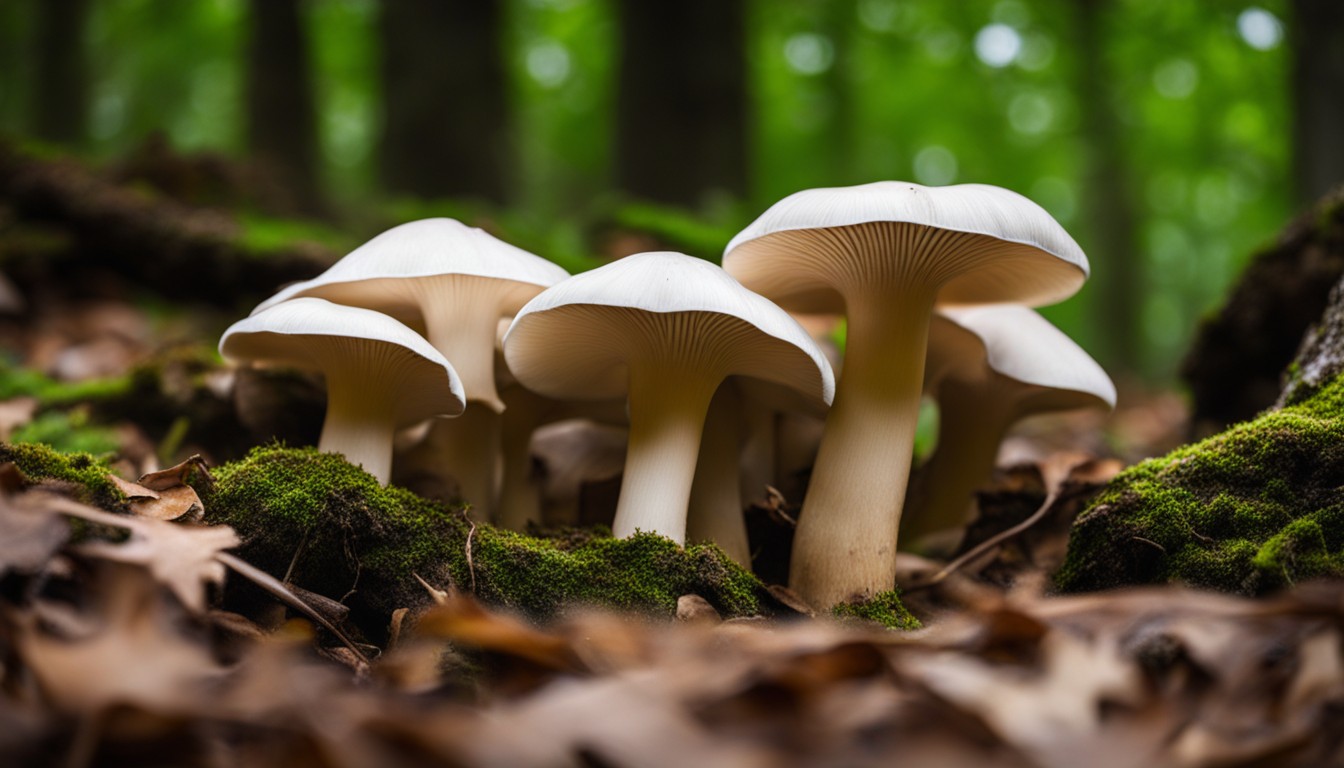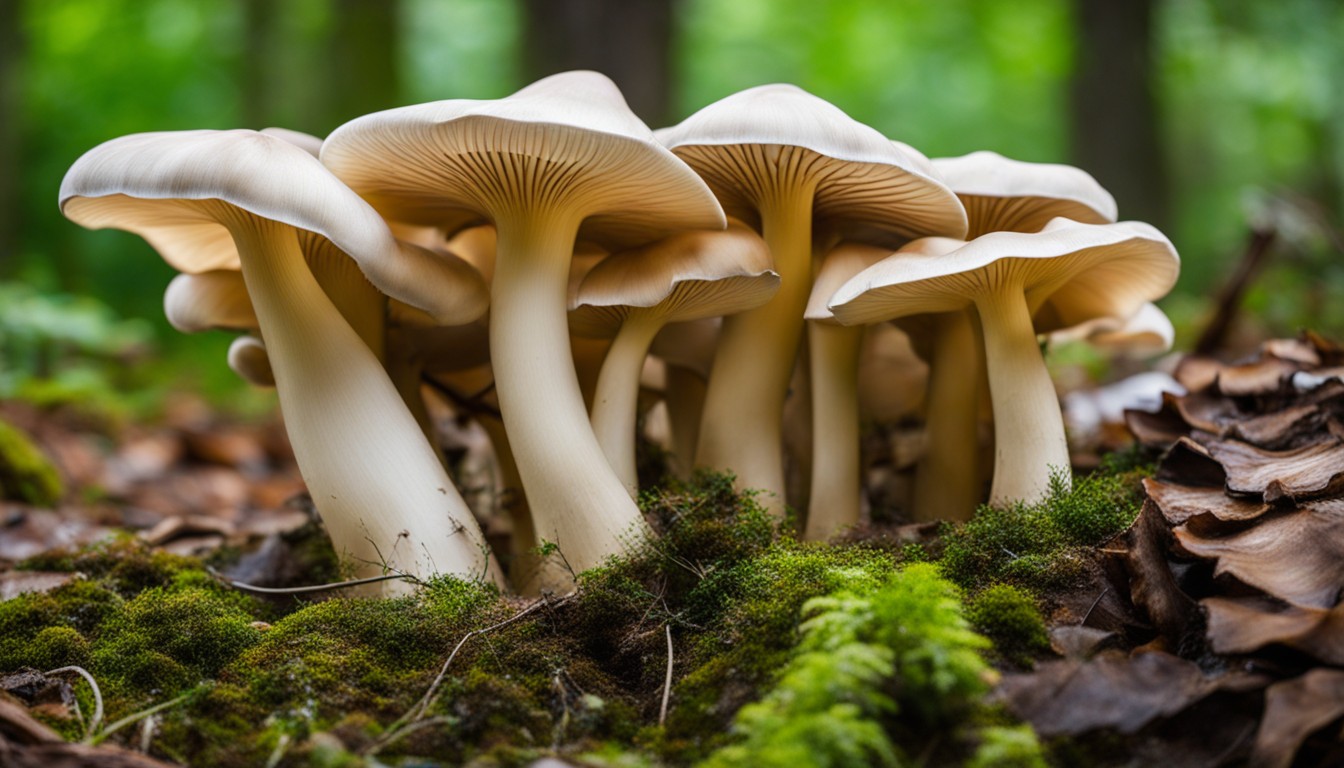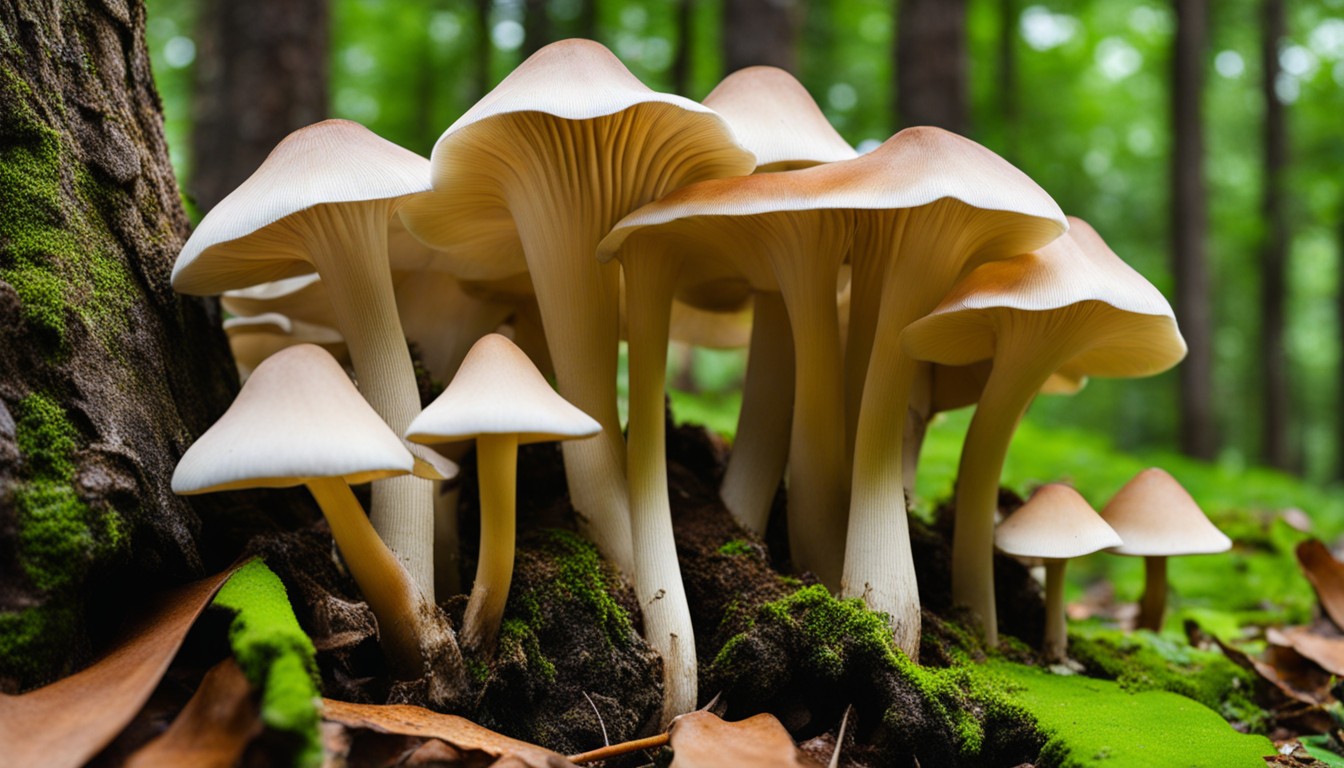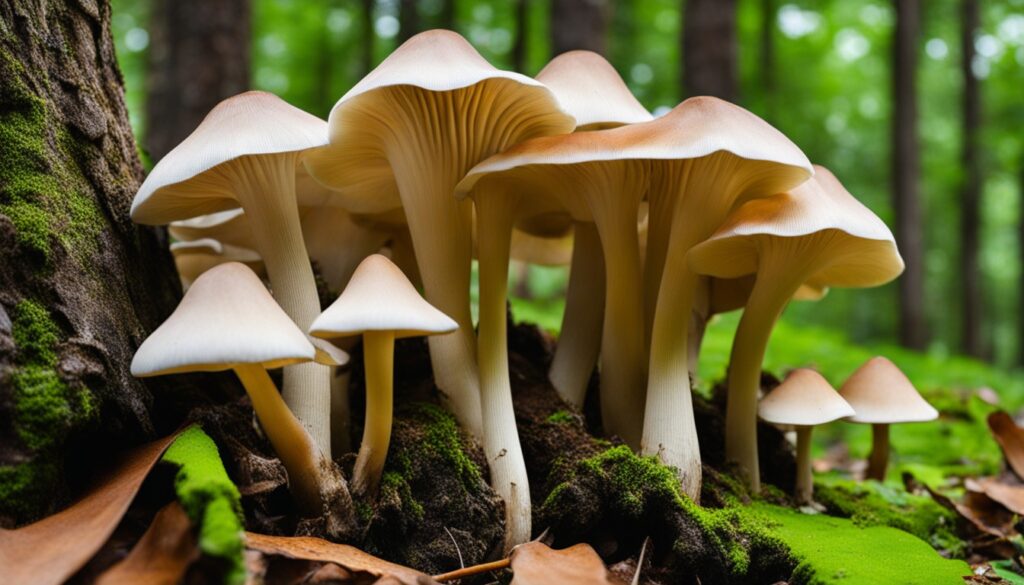The Northeast region of the United States boasts a remarkable diversity of mushrooms, making it a paradise for fungi enthusiasts and foragers alike. From the dense forests of Maine to the rolling hills of Pennsylvania, there are countless species to discover and admire. In this blog post, we will delve into the fascinating world of Northeastern mushrooms, exploring their unique characteristics, habitats, and culinary uses. Join us as we uncover the hidden treasures that lie beneath the forest canopy and celebrate the rich fungal heritage of the Northeast.
Understanding Fungi
The northeast offers a substantial array of fungi, ranging from the exquisite culinary varieties to the deadly poisonous. This burgeoning fungal biodiversity offers a unique insight into the complex world of fungi and their ecological roles.
Providing a comprehensive overview of fungi in the northeast, we delve into their intricate systems, witness their prolific growth, and come to understand their survival strategies. This study opens up the magnificent world of Northeast fungi and their profound impact on natural phenomena.
What are Fungi?
Fungi represent a massive kingdom of organisms distinct from plants and animals. Among Northeast’s biota, they are revered as the silent recyclers, working diligently beneath the surface. Fungi constitute important contributors to Northeast’s unique ecosystems.
Fungi, with their unique absorption nutrition and chitinous cell walls, are integral to Northeast’s ecosystems, working as silent recyclers from beneath the surface with an astounding diversity ranging from yeast to large mushrooms.
Fungi are characterized by their chitinous cell walls and their unique mode of nutrition – absorption. Unseen to the nake eye, they involve extensive networks of filaments known as hyphae, enveloped by a structure – the mycelium, facilitating nutrient and water absorption.
Diversity among fungi is truly breath-taking. Northeast is home to a fascinating range of fungi, from tiny yeast and molds to large mushrooms and bracket fungi. Each type displays remarkable adaptations to own ecological niches.
Mushrooms – the most visible part of certain fungi, are particularly prolific. Known as the fruiting bodies of fungi, these captivating lifeforms represent only a fraction of the hidden world of mycelia beneath our feet. Each type playing an essential role in ecosystem dynamics.
Beyond mushrooms, northeast hosts diverse fungi types including rusts, smuts, and lichens. Despite their unassuming appearance, these organisms play crucial roles in maintaining ecosystem health. Thus, fungi, in their myriad forms, continue to reveal the rich tapestry of Northeast’s flora.
Roles of Fungi in Ecosystems
Fungi play a significant role in the biogeochemical cycles in Northeast ecosystems. As decomposers, they break down dead organics, converting them back into nutrients. This process helps maintain soil quality and promote plant growth.
In addition to decomposition, fungi play a crucial role in symbiotic relationships with plants. They connect with plant roots, forming a vast underground network. This partnership, known as mycorrhizal symbiosis, assists in nutrient exchange, ensuring plant health.
With fungi’s ecological contributions, the once seemingly simple mold and mushrooms transform into indispensable components of the Northeast biocenosis, intricately linking plants, animals, and their environment.
Lichens, a composite organism that emerges from algae or cyanobacteria living among filaments of fungi in symbiosis, are also key players in the ecosystem. They form on the surface of trees and rocks, providing a food source for various insects and larger animals too.
Mushroom Classification
In a foray to Northeast’s mushroom taxonomy, a cardinal order and wide-ranging families highlight the richness and disparity in the fungal kingdom. From commonplace Basidiomycetes to exotic Zygomycetes, the diversity astounds.
Navigating through the labyrinth of mushroom taxonomy might seem daunting. However, a deep-dive into the Northeast fungi groups, revealing Ascomycetes, Chytridiomycetes and more, provides a comprehensive understanding of this mysterious kingdom.
Basidiomycetes
Main representatives of the Basidiomycetes in Northeast include sizable umbrella-shaped species such as Amanita, Russula, and Cantharellus. They are known for their distinctive gills under the cap, which releases countless microscopic spores into the environment.
The dominance of Basidiomycetes in Northeast’s fungi kingdom is attributed to their affinity for diverse habitats; these fungi thrive in forests, meadows, and even urban areas. Their ability to inhabit various environments contributes to the richness of Northeast’s fungal biodiversity.
The Basidiomycetes are also notable for their role in decomposing organic matter. By breaking down deadwood and leaves back into the soil, they reset Nature’s cycle, enriching the environment and maintaining a balance within the ecosystem.
Ascomycetes
Ascomycetes, widely appreciated experts in decomposition and soil formation, significantly contribute to Northeast’s Mycological diversity. Gifted with the remarkable ability to degrade plant materials, they hold an important ecological role.
In the mystifying world of Ascomycetes, also known as sac fungi, Northeast’s biodiversity gets an intriguing layer of complexity. Their spores, encased in sac-like structures called asci, make them easily distinguishable.
These unsung heroes lead a hidden life, subtly influencing bio-geochemical cycles and enabling a cascade of ecological processes. Mastery over nutrient recycling sets them apart in the fungal kingdom.
Peeking into the lives of these sac fungi, we uncover their significant contributions towards the dynamic equilibrium of Northeast’s ecosystems. Ascomycetes serve as a testament to nature’s intricate interdependencies.
Zygomycetes
Zygomycetes, a diverse class of fungi, makes its prominent mark in the Northeast’s fungal landscape. Their predominance is witnessed especially amid decaying organic matter and in soil environments. This group includes beneficial decomposers, enhancing nutrient recycling within the ecosystem.
Acting as symbionts, Zygomycetes form a fascinating network of relationships with plants of the Northeast. They associate with plant roots proving beneficial in nutrient uptake, highlighting their integral role in optimizing plant health and forest sustainability.
Despite the unwavering utility of Zygomycetes, it isn’t exempt from controversy. Some species of this fungi class can be pathogenic, causing diseases in insects and even humans, elucidating their dual role in Northeast’s ecosystem.
Key Zygomycetes, such as Rhizopus, produce large quantities of airborne spores boosting their widespread presence. Their ability to survive and flourish under varying conditions underlines their resilience and adaptability.
Undeniably, Zygomycetes shape the rich tapestry of the Northeast’s fungal community. By filling various ecological niches, they contribute to the region’s rich biodiversity, making their study indispensable in understanding the myriad interactions in the Northeast’s ecosystem.
Chytridiomycetes
Chytridiomycetes are aquatic or soil-dwelling fungi, often spotted in the Northeast. Characterized by their unique zoospores – motile cells with a single posterior flagellum, they play significant roles in the decomposition process and nutrient cycle within their ecosystems.
Belonging to the oldest of the fungi divisions, Chytridiomycetes are considered to be a primitive group. They redefine history’s perception of fungi, offering a unique glimpse into the evolutionary past of this diverse kingdom.
Given their remarkable resilience, Chytridiomycetes underscore a valuable lesson in biodiversity conservation in the Northeast. Their study provides insights into how different fungi species coexist, contribute, and adapt in diverse habitats, reinforcing ecological balance and resilience.
Identifying Mushrooms

Drawing attention to differing mushroom species in the Northeast demands observation of cap shape, gill structure, spore color, stipe characteristics, and any signs of an annulus or volva. These head-turning traits prove critical in the success of mycological exploration.
To correctly identify Northeastern mushrooms, start with noting its physical appearance, habitat, and time of year. These steps when combined with reliable field guides and identification apps, secure a comprehensive and scientific approach towards mushroom identification.
Common Mushroom Features
Undeniably, the distinguishing feature of Northeast mushrooms is variety, characterized by a distinctive cap, stalk, and gill structure that can vary vastly from one species to the next. These traits facilitate identification and cultivate a sense of familiarity among nature enthusiasts.
The cap shape, a distinctive attribute, ranges from conical, bell-shaped to obtusely convex. This, combined with the color varying from bright to subtle hues, forms a marker for mushroom identification, a trait common in Northeast mushrooms.
Stalk or stem is a unique attribute of mushrooms that varies in length, color, thickness, and presence of a volva or ring-like structure. This intricacy helps separate similar-looking species and upholds the diverse aesthetic of Northeast fungi.
The undercap gill structure also manifests in various forms like free, attached, or decurrent, and colors in the Northeast mushroom species. This fascinating diversity in form acts as an integral part of the mushroom identification process.
Texture and odors play subtle roles, often overlooked. Regularly found Northeast mushrooms, such as Chanterelles, exhibit a unique fruity aroma and unusual texture. Thus, familiarizing oneself with these nuanced traits can enrich the mushroom foraging experience.
Key Identifying Characteristics
Unlocking the mushroom code requires keen observation and knowledge. Dedicate attention to particular characteristics such as cap shape, stem thickness, gill structure, color, and odor, for accurate species identification in the Northeast.
A mycologist’s guide revolves around decoding the distinct traits of Northeastern mushrooms. Focusing on spore print, substrate preference, growth patterns, and seasonal appearance aids in discriminating amongst diverse fungi species.
Using Field Guides and Apps
In the era of technology, mushroom identification has taken a modern turn, leveraging digital mycology. Apps and field guides enhance the exploration of Northeast fungi, making the identification process more precise and accurate.
- Digitizing Mycology: How Apps and Field Guides Help Explore Northeast Fungi
- Modern Mushroom Hunting: Leveraging Field Guides and Apps
Mushrooms of the Northeast

The Northeast is a veritable canvas dotted and textured with a myriad of mushrooms, each contributing to the biodiversity and ecological health of the region. Exploring this vast variety introduces one to the unique aspects and roles of fungi in supporting and enhancing their respective ecosystems.
Applauded as a ‘Mushroom Paradise’, the Northeast presents a comprehensive landscape teeming with fungi. The range of diverse mushrooms found here is emblematic of the area’s rich ecological fabric, sparking intrigue and fascination among mycologists and nature enthusiasts alike.
Forest-Floor Mushrooms
Nature’s understory provides a rich environment for forest-floor mushrooms in the Northeast. These terrestrial delights, often hidden among the leaf litter, are a significant yet underappreciated component of the region’s biodiversity.
- Morel: A springtime delicacy distinguished by its honeycomb cap.
- Puffball: Recognizable by their spherical shape and puff of spores when matured.
- Russula: A large family of mushrooms with diverse colors and cap shapes.
- Chanterelles: Known for their unique color and aroma, often found near hardwood trees.
- Amanita: A genus encompassing both edible and highly toxic species, necessitating careful identification.
Mushrooms on Deadwood
Life After Death takes on a whole new meaning as the fascinating world of mushrooms rising from Northeast’s deadwood is revealed. Serving as recyclers of nature, these fungi bring forth the complexities and wonders of our ecosystem. Wood-Borne Wonders depict a story of survival and resilience, unfolding a myriad of mushrooms that unearth their charm on decaying wood amid the pristine wilderness.
- Dead Man’s Fingers: Xylaria polymorpha
- Turkey Tail: Trametes versicolor
- Artist’s Conk: Ganoderma applanatum
- Velvet Foot: Flammulina velutipes
- Bleeding Tooth: Hydnellum peckii
- Lion’s Mane: Hemiteles erinaceus
Mushrooms in Wetland Areas
The Northeast’s marshes overflow with an abundance of mushroom species, adding to their biodiversity. Let’s delve into wetland fungi, where spongy grounds provide a nurturing environ for fascinating fungal diversity.
- Species Sampling: A crucial approach involving collection and record-keeping of diverse mushroom species.
- Ecological Role Analysis: Understanding the interactions and complex roles fungi play in marsh ecosystems.
- Seasonal Survey: Observing the significant fungal activity during wet and temperate seasons.
- Identifying Poisonous Varieties: Accurate identification and avoidance of harmful mushroom types.
Mushrooms on Trees
Arboreal intrigue envelopes the exploration of unique mushroom species inhabiting Northeast’s trees. These tree-clingers offer a glimpse into the riveting world of tree-dwelling mushrooms in the region.
- Identify the ‘Chicken of the Woods’, a brightly colored fungus growing on dying or dead hardwood trees
- Discover ‘Artist’s Conk’, a woody, shelf-like fungus growing on living and dead coniferous and hardwood trees
- Spot the ‘Pear-shaped Puffball’, often found on decaying logs
- Look out for the ‘Lion’s Mane’, a white, cascading mushroom growing on hardwood trees
- Be awed by the sight of ‘Dead Man’s Fingers’, a black, finger-like fungus sprouting from tree roots and stumps
Poisonous Mushrooms to Avoid
In the Northeast, a few notorious mushroom species pose a significant risk. One such unseen assassin is the ‘Destroying Angel’, a pleasing yet deadly specimen. It camouflages itself among innocuous species, causing severe liver damage upon ingestion.
Another prominent member of the toxic fraternity is the death cap mushroom. Though similar in appearance to harmless field mushrooms, its consumption leads to violent bouts of poisoning, potentially causing fatality.
Survival in the fungi-filled Northeast requires an in-depth understanding of these treacherous species. The lethal Galerina and deadly Cortinarius, masquerading as the safe, edible Honey Mushroom and Field Mushroom respectively, demand special caution.
Direct attention to the uniquely dangerous Fly Agaric. It’s easily recognizable with its red cap adorned with white dots. While not lethal, its consumption can cause hallucinations, a disorienting experience for the unsuspecting forager.
Preserving and Cooking Mushrooms

Taking the bounty of the Northeast’s forest mushrooms into the kitchen opens up a world of culinary possibilities. Our comprehensive guide details preservation methods and preparation techniques for these fascinating fungi.
Embark on a gastronomic journey with the diverse mushrooms native to Northeast. This guide offers insights on preserving their freshness and enhancing their flavors through specific cooking techniques.
Drying and Freezing Techniques
To ensure longevity, first clean the mushrooms thoroughly with a soft brush to remove dirt. Then, you may either use a dehydrator, set at a low heat for the perfect dryness, or opt for the natural air-drying technique, though it takes longer.
Drying mushrooms intensifies their flavor, making them a perfect addition to stews and sauces, long after the foraging season has passed. Simply rehydrate them by soaking in warm water before usage.
Freezing is another excellent preservation method. Blanch whole or sliced mushrooms for a few minutes before cooling quickly and freezing. This method retains the texture and flavor of fresh mushrooms.
With these techniques, you get to enjoy the bounty of the Northeast’s diverse fungi throughout the year. Whether it’s the summer’s boletes or the fall’s oysters, you can still taste their unique flavors even in the deep winter months.
Delicious Mushroom Recipes
Gifted with an impressive biodiversity, Northeast’s forests provide the ideal setting for a kitchen adventure. Turn fresh discoveries from your mushroom hunts into exquisite recipes such as Chanterelle Mushroom Pasta or Morel Cream Sauce to savor the authentic flavors of the wild.
By embracing Northeast’s fungi diversity in your kitchen, you can transform common forest finds into gourmet delights. Consider delicacies like Hen of the Woods Pizza or Black Trumpet Risotto, drawing upon the unique textures and flavors of native mushrooms.
Don’t forget fascinating species like the Bicolor Bolete, which can add a new twist to your culinary creations. Whether it’s Bolete Stir Fry, a comforting soup, or an intricate entreé, these fungal marvels of the Northeast can elevate your dining experience to new dimensions.
FAQ: Mushrooms of Northeast
What is the classification of mushrooms?
Mushrooms belong to the kingdom Fungi and are classified into various families, genera, and species based on their morphological and genetic characteristics.
How can mushrooms be identified?
Mushroom identification involves examining key features like the shape and color of the cap, the presence of gills or pores, the texture of the stem, and the overall habitat in which the mushroom is found. Consulting field guides and experienced mycologists can greatly assist in accurate identification.
What is the ecological role of mushrooms in the Northeast?
Mushrooms play a vital ecological role in the Northeast by decomposing organic matter, assisting in nutrient cycling, and forming symbiotic associations with trees and plants through mycorrhizal relationships.
Are all mushrooms of the Northeast edible?
While the Northeast region is home to numerous edible mushroom species, it is essential to exercise caution. Some mushrooms can be highly toxic or hallucinogenic. It is always advisable to consult experts or experienced foragers before consuming any wild mushrooms.
What are some popular culinary mushrooms found in the Northeast?
The Northeast is abundant in culinary treasures such as the delectable morel, the meaty chanterelle, the flavorful porcini, and the versatile oyster mushroom. These mushrooms add unique flavors and textures to a wide range of savory dishes.
Can mushrooms of the Northeast be cultivated?
Yes, many mushroom species found in the Northeast can be successfully cultivated using various techniques. This allows for the sustainable production of gourmet and medicinal mushrooms, providing an alternative to wild foraging.
How can I safely forage for mushrooms in the Northeast?
To safely forage for mushrooms in the Northeast, it is important to educate yourself about mushroom identification, seek guidance from experienced foragers, obtain necessary permits if required, respect private property, and practice sustainable harvesting to preserve mushroom ecosystems.
Are there any notable mushroom festivals or events in the Northeast?
Yes, the Northeast hosts several mushroom festivals and forays where enthusiasts gather to celebrate and learn about mushrooms. These events often include educational talks, guided forays, cooking demonstrations, and opportunities to connect with like-minded individuals.
Can I contribute to mushroom research and conservation in the Northeast?
Absolutely! Various citizen science programs and mushroom clubs in the Northeast welcome individuals to participate in mushroom research, contribute to data collection, and support conservation efforts aimed at preserving mushroom habitats and biodiversity.
Note: Remember to always follow proper safety guidelines and legal regulations when engaging in mushroom-related activities.
Conclusion
As we end our journey through the mushroom diversity found in Northeast, it’s impressive to reflect on the multiplicity of fungi species that we’ve encountered. From forest floor mushrooms to the fascinating fungi thriving in wetland areas, our exploration provided a comprehensive insight into a signature feast of diverse fungi.
- Savoring the Fungi Feast: The exploration illuminated different types of mushrooms: Basidiomycetes, Ascomycetes, Zygomycetes, and Chytridiomycetes.
- Identifying Mushrooms: We glimpsed into common mushroom features and key identifying characteristics.
- Mushrooms of Northeast: Encountered a diverse variety of mushrooms including forest-floor species, wetland area mushrooms, mushrooms on deadwood and trees.
- Useful Techniques: Learned about drying and freezing techniques for preserving mushrooms and some delightful mushroom recipes.
- Note of Caution: Identified some poisonous mushrooms to avoid.

